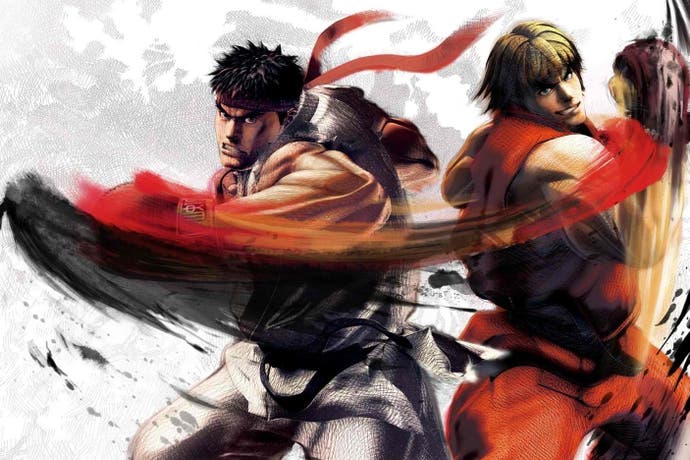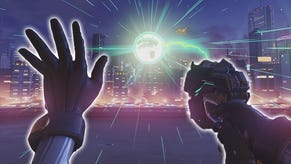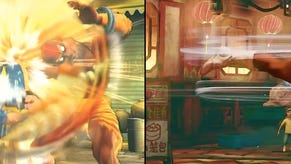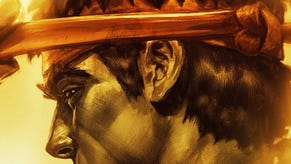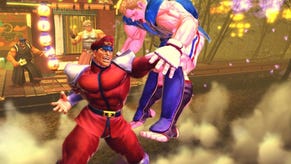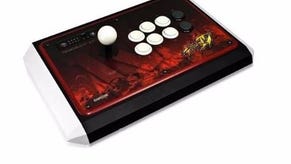A brief history of Street Fighter 4
From the archive: Ono, Killian and the SF4 community look back at one of the fighting genre's greats.
Editor's note: Street Fighter 4 comes to PlayStation 4 in Europe today, and to mark the occasion we're reprinting this look at the first five years of Capcom's modern classic, first published last year. You can find our review of Ultra Street Fighter 4, the version which is coming to PlayStation 4, here, and Digital Foundry will be taking a full look at the port over the weekend. Oh, and a quick disclaimer - since writing this, Matt Edwards decided he loved Street Fighter so much that he now works at Capcom, where he can take lunchtime trips to Hammersmith's Pret with Ken and Ryu every day.
I can still clearly remember the first time I played Street Fighter 4, for what would be one of the first reviews I ever wrote for a games magazine. It was just before the game launched in Japanese arcades back in 2008, at Capcom's old offices in Hammersmith. It was running on a single arcade cabinet, and with a few members of the UK fighting game community also in attendance, a long afternoon quickly turned into a winner-stays-on format where everyone was trying to combo into an Ultra. I thought the game was one of the most masterful sprite to polygon adaptations I'd ever seen, and although I'd barely scratched the surface of the Focus Attack system, its versatility was clear. In the end, I scored Street Fighter 4 a nine.
It's a decision I've always partially regretted. It didn't seem right to fire off my first 10 so early in the game. I couldn't be entirely sure if Street Fighter 4 would hold up with extended play and there was no way of knowing if one of the characters (perhaps a certain Muay Thai fighter) would turn out to be overpowered. As it turns out, I wasn't the only one who had a few doubts.
"I played Street Fighter 4 very near the start of its development in 2006", recalls lead game designer at Sony and former Capcom community manager, Seth Killian. "So while I was ecstatic that the game was going to exist, my first impression wasn't great. They had two characters in a partially playable form, but the transition to 3D models was very difficult. But we worked hard to make sure the community had many chances to try it before release. By the time we launched in 2009, everyone felt confident that Street Fighter 4 had the magic needed to get people street fighting again."
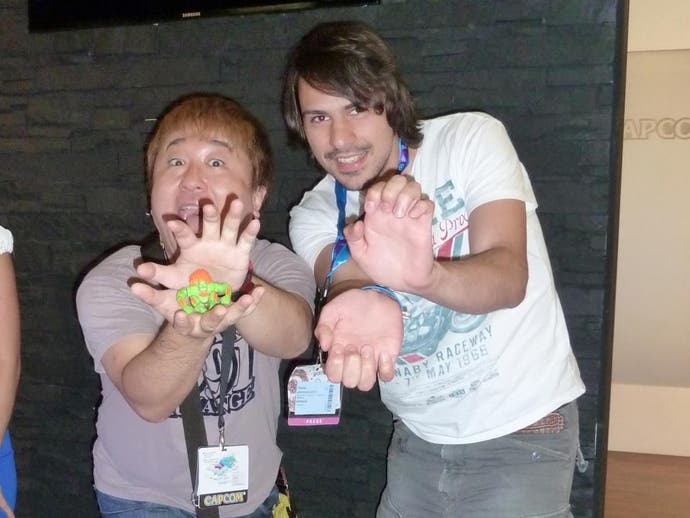
In many ways, that's been the Street Fighter 4 series' crowning success. It was embraced by the die-hard fans that grew up with Street Fighter 2, and it introduced a whole new audience to the world of dragon punches and super cancels. "At first I was against it because I enjoyed 2D sprites, but once I sat down with the game, it became so fun and I never wanted to get up from the machine," remember US pro-gamer Justin Wong. And when the UK got its first taste of Street Fighter 4 at London's Trocadero arcade, it quickly developed a following.
"Having Street Fighter 4 in London arcades increased its exposure," recalls the UK's top street fighter Ryan Hart when asked about the impact the game had on the London fighting game community. "It introduced new faces and brought many people back in to the arcades like no other fighting game has ever done. At one pound a pop, playing at the Trocadero was a pricey affair, but we were forced to partake due to it being the only place to play Street Fighter 4 during its early days." Then in February 2009, the floodgates opened as Street Fighter 4 received its worldwide console debut.
The console version of Street Fighter 4 was such a pivotal moment for the genre that it's hard to put it all into perspective. It's not like excellent fighting games like Virtua Fighter 5 and Tekken 5: Dark Resurrection hadn't taken advantage of the Xbox 360 and PlayStation 3 already, but the endearing Street Fighter legacy managed to send things into overdrive. We suddenly had £150 arcade sticks selling out faster than MadCatz could make them and mini-tournaments popping up left, right and centre. "Street Fighter 4 took all those years of fiery passion and poured gasoline on it," says Killian.
It wasn't just about the one-frame links and crouch techs, either, as the love of the game manifested in other ways. "The release of Street Fighter 4 made the brand relevant again", enthuses actor, director and lifelong Street Fighter fan, Joey Ansah. "In that respect, I knew the world was ready to consume a proper live-action Street Fighter done right. Then Legend of Chun Li came out. Part of me died inside but my spirit of vengeance was ignited, to send to hell the people responsible and deliver justice. Street Fighter: Legacy was the first phase of retribution." And in his upcoming role of Akuma in Street Fighter: Assassin's Fist, Ansah hope to "restore balance to the universe as phase two."
Fan projects like Street Fighter: Assassin's Fist and Street Fighter X Mega Man are one thing, but the key thing that made the Street Fighter 4 series into a competitive mainstay were the online features. "Thanks to the advent of the internet, players could now challenge each other online, get their games delivered digitally and enjoy unprecedented access to events and tournaments," recounts Street Fighter 4 producer, Yoshinori Ono. "All of these advances mixed with the excitement of the players themselves to create a whole new scene." A scene that only develops new tech and strategies on a regular basis, but even has its own scholarship programme courtesy of the Evolution Championship Series.

Wong and Hart are both former Evolution champions who've competed for some of the biggest prizes in the fighting game world. In comparison, I once won a pair of boxed Street Fighter 4 action figures at a mini-tournament held in a Cornish cinema. Said action figures were later sold for a cool £40 when I discovered that one of them had a misprint on the back of the box where the "o" in country was missing.
Since then, I've played against much more formidable competition, some who can batter me 10 games straight and some who offer a more even challenge. But while I'll happily throw down for an afternoon of casual matches, I - like thousands of others - have discovered a taste for watching the latest Street Fighter tournaments on Twitch and YouTube. I've never actually met the likes of Daigo, Xian, Infiltration, PR Balrog, Santhrax or Mike "Fourth Place" Ross in person, but I don't need to see a name on the screen to know who's manning the arcade stick. The play-style is usually enough of a giveaway.
It's not just the Street Fighter fans, either, as more and more players are being sponsored by professional eSports teams like Evil Geniuses and Empire Arcadia. "Over the past five years, eSport event organisers have been very accommodating towards Street Fighter and its community, and this has been a big part of Street Fighter's manifestation at numerous eSport events", explains Hart. "In addition, having Street Fighter featured at the most prestigious annual event - the Evolution World Championships in Las Vegas - gives it more global recognition and greater stature in the pro gaming world."
When talking about the prestige of the Street Fighter 4 series and the level of reverence it's held in, it's easy to forget the other fighting games that are worthy of equal respect. "I think the fighting game community wouldn't be as strong because Street Fighter 4 and Marvel vs Capcom 3 brought a lot of players together," Wong says when asked about a world without Street Fighter IV. "There are other game companies that have produced amazing games, but for some reason, everyone gravitates towards the Capcom fighters." It's an undeniable truth, and yet by proving that a 2D fighting game could still sell over a million copies, Street Fighter 4 helped pave the way for the likes of Mortal Kombat and Skullgirls.
It also set itself up for numerous updates that improved upon an already accomplished template. "Although I think a number of core issues are still in the game, I believe the Street Fighter 4 series has improved over time," says Hart. "Arcade Edition ver.2012 is the best version to date due to the buffs and nerfs from the previous versions. Now the game presents a more balanced line-up throughout, offering users the chance for competitive gameplay with just about any character." This doesn't mean there aren't a few terrible match-ups like T. Hawk and Blanka and Guile and M. Bison, but compared to the Chun-Li, Yun and Ken show that was Third Strike, ver. 2012 is as balanced as an Olympic gymnast.
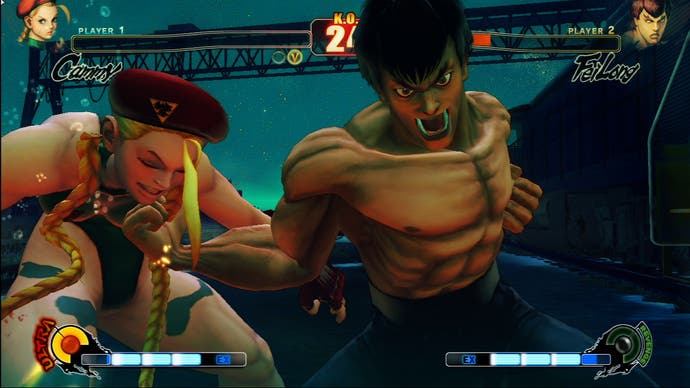
It's crazy to think that the original arcade version of Street Fighter 4 had just 17 playable characters to its name, and now, with the advent of Ultra Street Fighter 4, Capcom and Dimps are poised to blow that figure out of the park with a combined roster of 44. "I suppose reaching the scale of the Marvel series' roster is a pretty big accomplishment, isn't it?," boasts an understandably proud Ono. And when you consider the fundamental system changes that go beyond the individual characters, Ultra is already looking like a more significant evolution than Super.
"I like the changes, especially the delayed wake-up", Wong says when asked about his thoughts on Ultra Street Fighter 4. "I'm not a big fan of super vortex characters but I love that they're putting an old school Street Fighter-style element back into the game. The Dual Ultra system will be match dependent and the Red Focus will definitely be something that I am interested in trying a lot." There's also the mysterious identity of the fifth character that will be joining Hugo, Poison, Rolento and Elena. Ibuki's friend, Sarai Kurosawa, seems to be the smart money, but the clues that Ono has been dropping like breadcrumbs seem to suggest someone even more obscure.
Even if it turns out to be another shoto-clone, it's hard to see how Capcom could mess up one of the sturdiest foundations in gaming. "If it weren't for Nishiyama-san's work on Street Fighter, Nishitani's work on Street Fighter 2 and Sadamoto bringing Street Fighter 3 to realization, we wouldn't have had a base to build upon," Ono affirms. "We looked at what they had done, analysed it and did our best to pay them homage [...] As long as I'm alive and at Capcom, I want to keep up this effort and make Street Fighter 4 even better. At least until we get a new numbered sequel out there!"
At this point, it seems that Street Fighter 5 is just about the only thing that could derail the Street Fighter 4 series, and seeing as old habits die hard, who's to say that Ultra Street Fighter 4 will be the last entry? It's been five years of roster restructuring, intense tournaments and fan dedication, and when you consider that Super Turbo and Third Strike are still being played competitively today, there's every chance that Street Fighter 4 will still be going strong when it reaches its 10 year anniversary. After all, Evolution just wouldn't be the same without it.
The same goes for the players, streamers, commentators, organisers, creators and personalities that have turned Street Fighter 4, a game of one joystick, six buttons and limitless outcomes, into something so much more. The fact that Killian, Wong, Hart, Ansah and Ono were so keen to discuss the series impact just highlights how much passion the world warriors continue to evoke. Other fighting games have more characters, flashier combos and deliver more hype, but it's the tireless efforts of the fighting game community that continue to make the Street Fighter 4 series relevant. If anyone deserves top marks, it's them.
